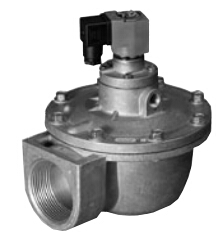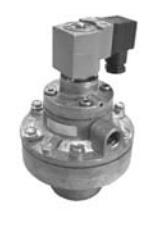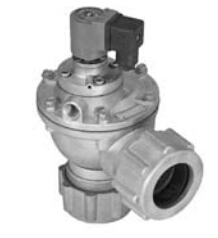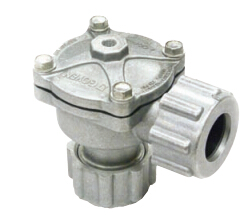HY.JSY-A Stepped Sand Collector
China is one of the countries most seriously affected by wind and sand in the world. In order to effectively prevent and control sandstorm disasters, we must first study the basic laws of wind and sand movement. The sand movement in the wind-blown sand stream includes the forms of shifting, jumping, and suspending. Among them, the screw movement is the form in which the sand rolls or slides against the sand bed surface. The jump is the form of movement of the sand after it jumps from the sand bed surface and then falls to the sand bed surface under the action of gravity. The suspension is the sand grain. The form of movement that hangs in the air with the air. These three forms of movement are interrelated, and there are complex exchanges of matter and energy between them. Therefore, these three forms of movement must be taken into consideration in the study of sandstorm theory and practice of sandstorm engineering. However, the complexity of the sand movement forced the researchers to artificially separate the three forms of movement for research.
According to the different forms of movement, the sand flow is divided into suspended layer, transition layer and creep layer from top to bottom. As part of the sand flow, the research on sand transport in the sand-creep layer is an important issue. According to the existing literature, the research method for sand transport in the sand-creep percolation layer includes the use of a trap meter to directly measure the sediment transport amount in the creep layer [Bagnold R A. Thephysics Οι DIown Sand And Desert Dune Methuen, Lonaonj 1941; Wu L. Beomorphology OiWind -Drift Sands And Their Controlled Engineering. Beijing: Science Press, 2003]; and using the distribution curve of sediment discharge along the height of the sand flow to the surface to estimate the amount of sediment transported by the slopping layer [Dong ZB., Liu X P. Wang H T., Zhao A G., Wang X M., 2002a. The Flux Profile Of A Blowings and Cloud: A Wind Tunnel Investigation. Geomorphology, 2002, 49: 219-230].
However, the amount of sediment transported by the above two methods includes not only the amount of sediment transported by the creeping layer, but also the effect of sand in part of the transition layer. The effect of sand in the transition layer cannot be eliminated and the results of the study will not reflect the objective situation. Therefore, accurate determination of the amount of sand transported by the creeping layer has become the focus of attention in the aeolian sand community. However, there are currently no special measuring instruments and measurement methods for sediment transport in the sand and creosote .
After many years of research, the Weifang Jinshui Huayu Information Technology Co., Ltd. and the Institute of Desert Research of the Chinese Academy of Sciences and the Cold Drought Research Institute of the Chinese Academy of Sciences have developed the HY.JSY-A stepped sand trap .
The sand trap can adjust the height of the sand collection tank at any time in the field observation of the sand flow in the field; the individual sand collection units with different heights will automatically and flexibly rotate with the wind direction for many years to ensure that the sand inlet is accurately aligned with the wind direction; sand tube the sand in the entire set of settling sand bag, higher test accuracy.
1, structure and working principle
HY.JSY-A Stepped Sand Collector - The bag-type sand trap is composed of a sand collection tube, a bracket, a guide, a cloth bag, and the like, and uses a cloth bag to collect sand. The structure is shown in the figure. 
The shape of the bag is streamlined so that the sand flow enters the sand trap with less interference. Above the cloth bag, there is a gauze structure with good permeability, so that the sand flow is reduced. The sand trap is equipped with a bearing structure underneath, and the rotation is flexible. The guide installed above can control the sand trap to freely rotate with the main wind direction, so that the inlet of the sand trap is always facing the erosion wind direction.
The sand flow is driven by the wind field around the sand trap, and it enters the sand bag through the sand entry channel of the sand trap. Because the shape of the cloth bag adopts a streamline structure, it can produce a venturi effect and reduce the speed of sand flow. The sand dust entering the bag is deposited in the sand bag by gravity, and the air is discharged from the ventilation screen formed by the gauze above the bag and the pores of the bag depending on the internal and external pressure difference.
The bag-type sand trap is simple in structure, convenient in price and easy to use. The sand inlet can always point to the direction of erosion. It can collect sand samples of different heights at the same location. It does not require staff to keep watch and maintain at all times. It can conduct long-term observation in the field. .
2, technical parameters:
Height: overall height: 80cm, the first layer is 30cm from the ground,
Sand entry channel: 5 rows of 10
Channel specification: 50*50mm
Channel spacing: 60mm
Housing Material: stainless steel, thickness 1 0 mm;
Bag capacity:> 100 0g
3 How to use
In the selected monitoring ditch, two HY.JSY-A type stepped sand traps were respectively installed (two repetitions), and one control was placed in the adjacent zone. When the sand is reached, most of the sand transported by the airflow is within 30cm from the surface, so the error is small and the sand collection is measured once for 10 minutes. Sand was collected from 10 sand inlets and collected in a bag mounted on the sand trap, and was measured every 5 days during the wind season (May to May).
At the same time you can set the wind speed anemometer to determine the corresponding wind speed. This product is simple to operate, light weight, small size, easy to install, suitable for field research and application.
Pulse Jet Valve with parts of Solenoid Coil, Solenoid Armature, aluminum valve body, and diaphragm, is suitable for dust collector applications, in particular for reverse pulse jet filter cleaning and its variations, including bag filters, cartridge filters and envelop filters, ceramic filters and sintered metal fiber filters.
Our pulse jet valve with high performance diaphragm, and construction with material as bellow:
Nuts: Diecast aluminum
Ferrule: 305 SS
Armature: 430FR SS
Diaphragm and seals: Nitrile or Viton
Spring: 304 SS
Screws: 302 or 304 SS




In addition to pulse jet valve,we also sale angle valve,valve diaphragm,Pulse Valve Repair Kits.
All size is available, pls contact us.
Pulse Jet Valve
Pulse Valve, Pulse Jet Valve, Dust Collector Valve, Pulse Solenoid Valve, Pulse Diaphragm Valve,Pulse Valve Repair Kits
NINGBO BRANDO HARDWARE CO.,LTD , https://www.brandopneumatic.com